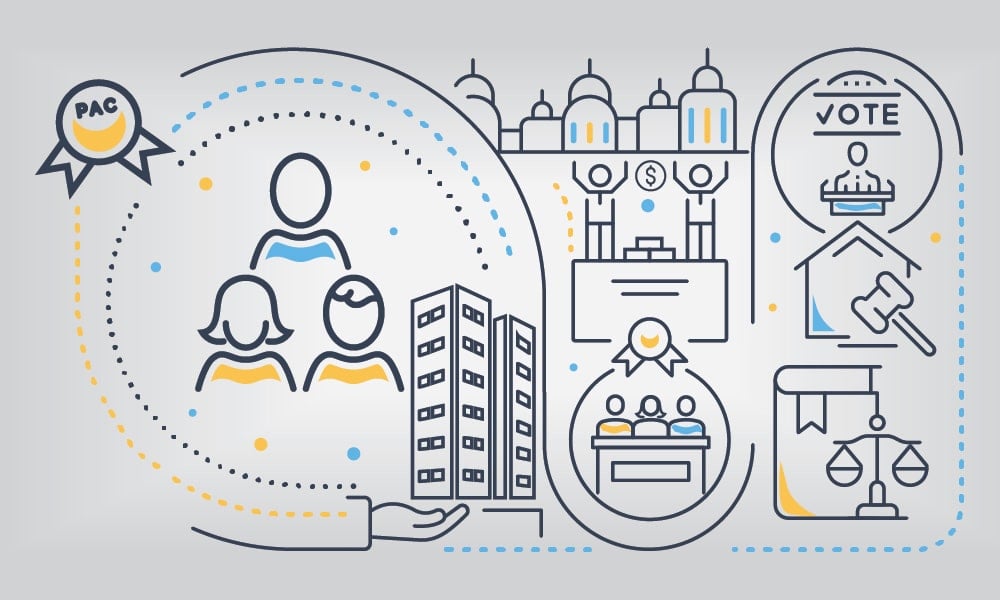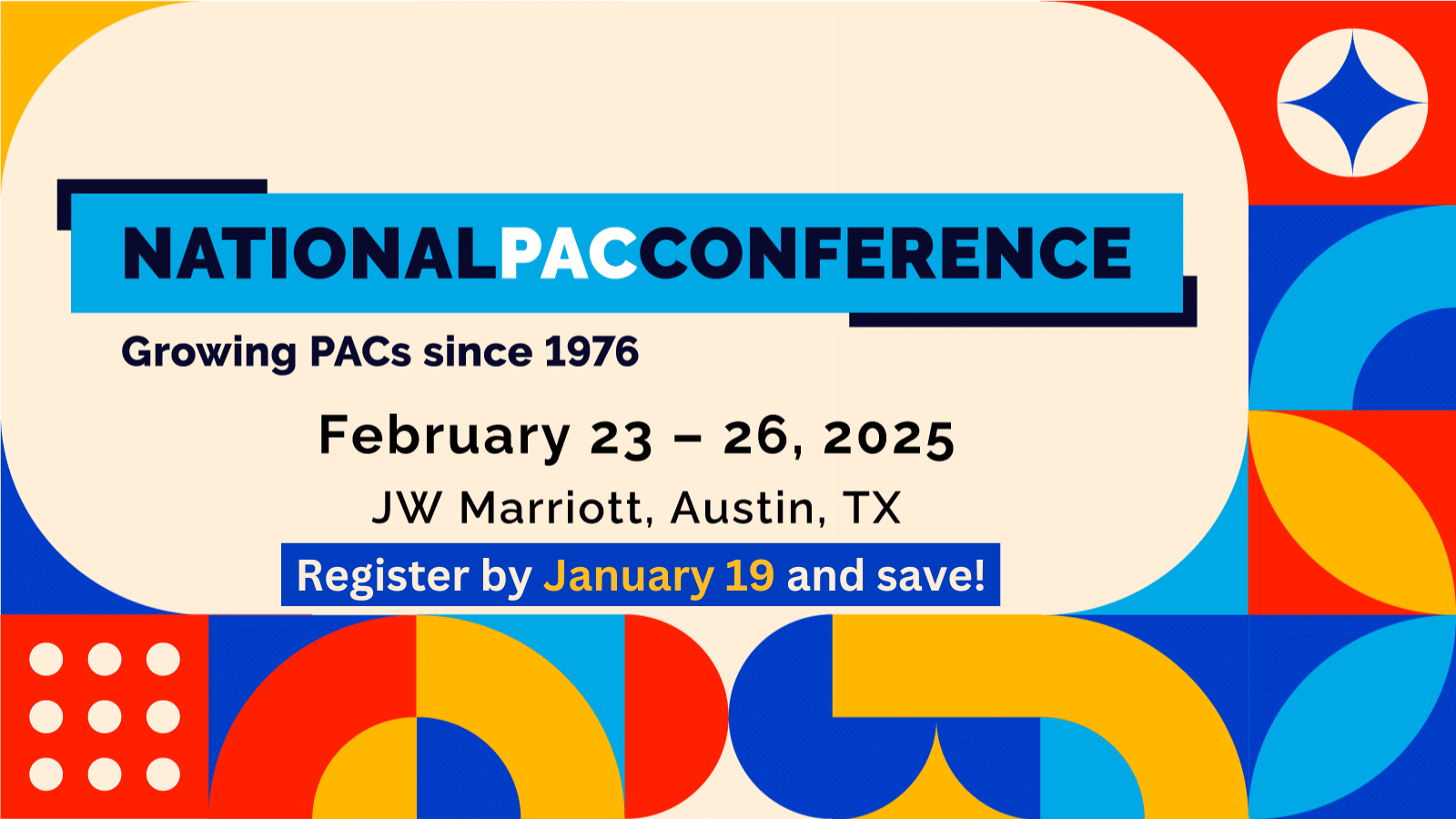The Truth About What I Do: My Quest to Get the Facts out About PACs
“You do what? But what is a PAC again?”
For those of us with careers in PAC and political affairs, these are common questions we face when venturing home for the holidays and talking with friends and family removed from the government relations and campaign space. When you work in this world, you get used to the polite, but somewhat disapproving responses as well as the more pointed questions when it’s automatically assumed you are part of “dark money” operations permeating our campaign finance system. I’ve always tried to debunk the most egregious myths about political action committees (PACs) and the role they play in the political system. But now, nearly eight years after the Supreme Court’s Citizens United decision, and against a backdrop of growing numbers of candidates that have pledged not to accept corporate PAC money, it’s more important than ever to get the facts straight.
Understandably the public is frustrated by our existing campaign finance system, but much of the increased animosity toward corporate PACs, particularly from candidates, is misguided. Over the next few months, I will outline key points explaining the incredibly important role of traditional PACs. We absolutely should have a national conversation about corporate political involvement and campaign finance—it is long overdue—but it’s also increasingly important to first understand some of the myths framing the current conversation.
First, let’s review the regulatory framework PACs operate within including the strict financial and reporting requirements. It’s not new, it has been largely unchanged since the Federal Election Campaign Act (FECA) of 1974. The 2010 Supreme Court Citizens Uniteddecision gave rise to independent expenditure-only committees or super PACs, but that in no way affected traditional PACs connected to an organization such as a trade association or corporation, and this is often at the heart of the misinformation about PACs.
Here are the facts:
Corporate PACs are not funded by corporate money.
- Corporate PACs are comprised of and depend on voluntary individual donations from their employees, which are subject to a $5,000 annual limit. A corporate PAC, though connected to a company, is required by law to operate from a separate segregated fund from the company’s general treasury. Under the Federal Election Campaign Act it is illegal for corporations to use general treasury funds to contribute directly to candidates. In fact, a corporate CEO is subject to the same $5,000 annual contribution limit as any of the company’s eligible employees.
Corporate PACs are largely funded by small donors.
- We’ve seen increasing numbers of small-dollar, individual donors contributing to political campaigns in recent years (think Bernie Sanders or Beto O’Rourke) . This isn’t new for corporate PACs. The average contribution by an individual employee to a corporate PAC is $316 out of a legal limit of $5,000 per calendar year and out of all eligible employees that can contribute to the PAC, the Public Affairs Council has found that the average participation rate in a corporate PAC is just 16 percent. Even some of the largest companies in the world, have relatively small PACs. All companies have a level playing field when it comes to operating a federal PAC – they all play by the same rules.
Corporate PACs abide by strict candidate contribution limits.
- The narrative that corporate PACs are an avenue for an individual corporation to direct millions of dollars (or more) to candidates for federal office is simply not true. Corporate PACs can only contribute $5,000 per election to a candidate committee. Therefore over a two-year election cycle, a PAC can contribute just $10,000 per federal candidate and those requirements are the same for each and every corporate PAC.
Corporate PACs represent the most transparent money in the campaign finance system.
- Every receipt a corporate PAC collects from an individual employee over $200 is disclosed to the Federal Election Commission (FEC). Similarly, every expenditure a PAC makes to a candidate or political committee is also disclosed to the FEC. Anyone with access to the internet can view these reports that are filed regularly with the Federal Election Commission and track every PAC contributor above that $200 threshold and every contribution made to federal candidates.
The U.S. has a complex campaign finance system and the confusion is understandable. But what Americans are likely frustrated by is the rise in spending among super PACs and other independent expenditure committees that as a result of the Citizens United decision can spend unlimited sums of money supporting or opposing candidates or policy issues. Super PACs are largely funded by independently wealthy individuals who can give unlimited contributions to these groups, not individuals subject to a $5,000 annual contribution limit of a corporate PAC. Many of the very candidates who took the “no corporate PAC money pledge” significantly benefited from an influx of largely untraceable super PAC spending on their behalf.
As I mentioned, a national discussion around campaign finance reform is welcome, but corporate PACs have been heavily regulated and transparent for decades, and they are not the problem. I look forward to continuing the discussion.
Contact Kristin at [email protected].

More News & Resources
Questions

Kristin Brackemyre
Senior Director, Public Affairs Practice
202-787-5969 | [email protected]
Featured Event
The PAC Conference combines essential skills training with cutting-edge sessions on fundraising, political strategy, communications and compliance. In such a niche profession, having a community to troubleshoot challenges and share successes with is vital. With over 300 PAC professionals in attendance, you’ll find your people here.
February 23 – 26, 2025 | JW Marriott, Austin, TX.


